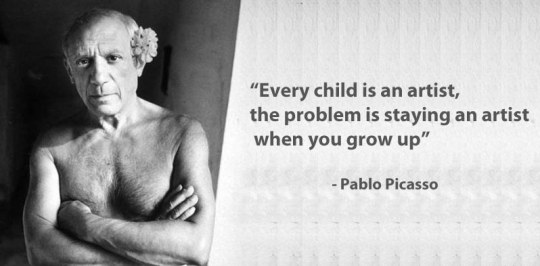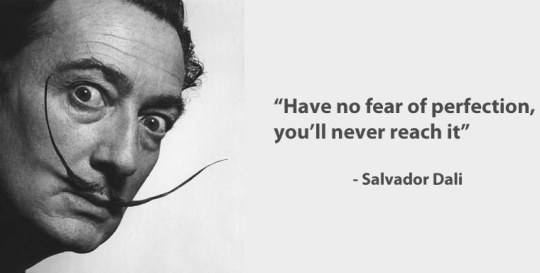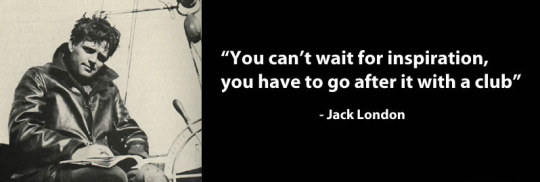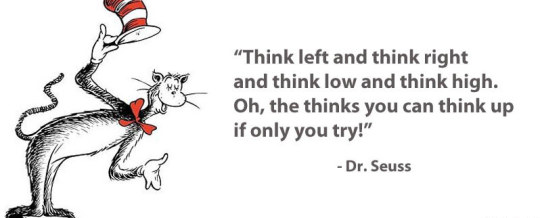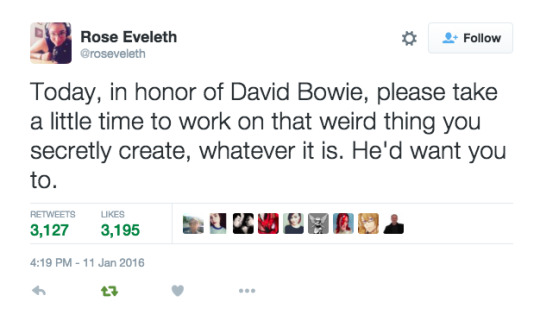Don't wanna be here? Send us removal request.
Photo
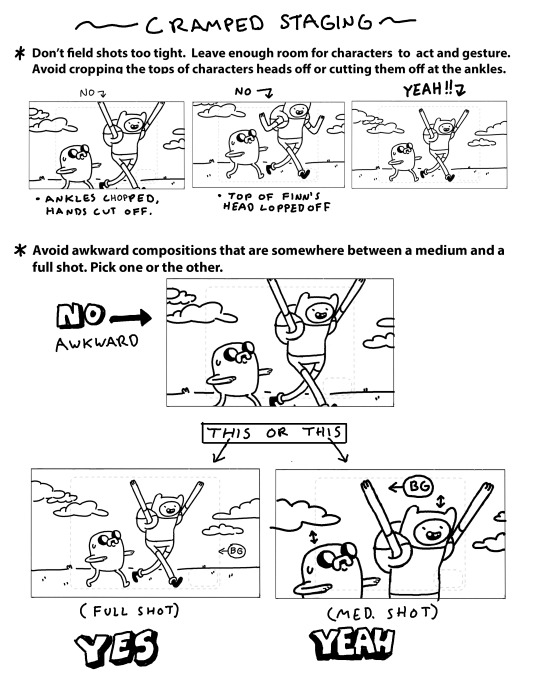
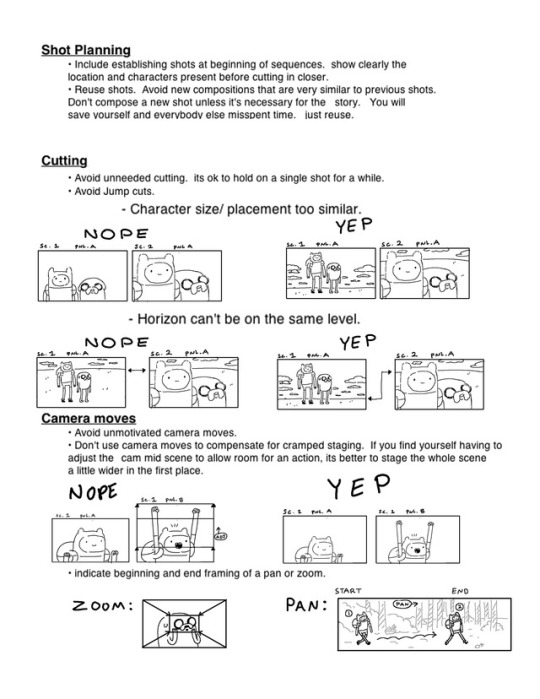
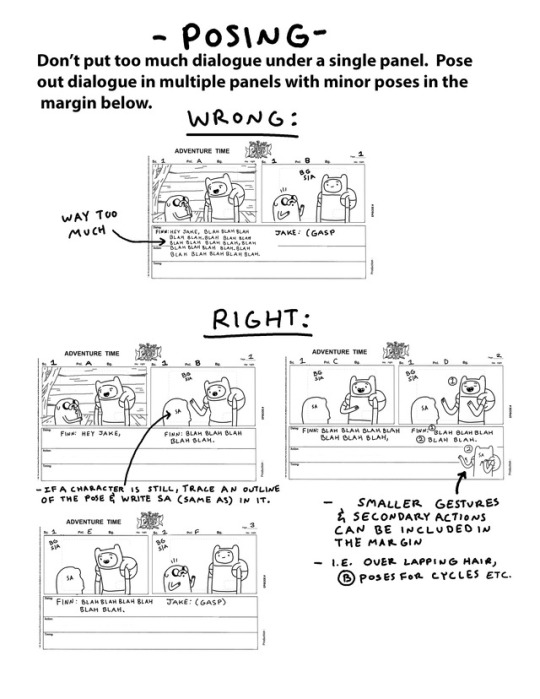

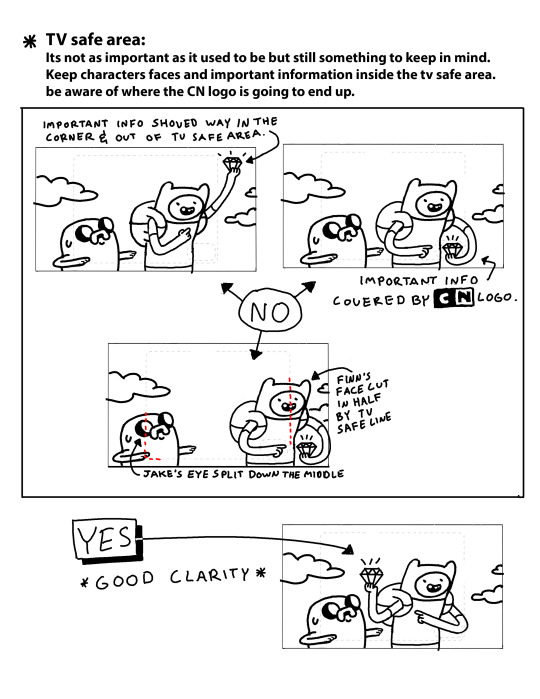

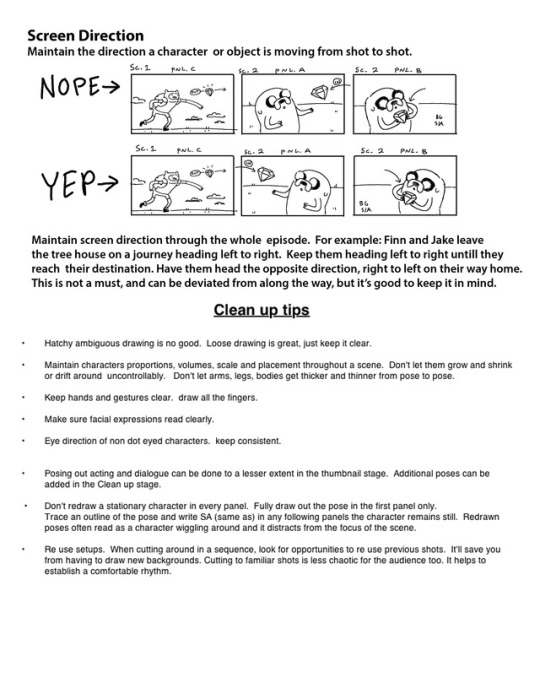
by storyboard supervisor Erik Fountain
A few years ago, Erik put together these updated AT storyboard guidelines for new board artists and revisionists.
134K notes
·
View notes
Photo




Thank you so much! I totally use such markers and I love the pencil!
I wish you could send me a handful more of your stickers, I’d be sticking them to all of my sketchbooks and files.
Man, it’s been ages since I did pencilwork.
694 notes
·
View notes
Quote
A bad idea written down is far better and far more useful to you than a blank sheet of paper and a mythical piece of brilliance that has been stuck in your head out of fear of failure. Go ahead and fail. Then make it better.
My screenwriting prof.
I felt like a lot of people needed to hear this. Including myself.
(via shaelinwrites)
60K notes
·
View notes
Photo
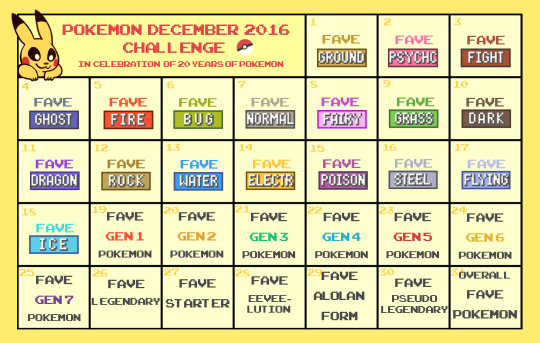
Wanted to make one for myself but you can join me if you want. Let’s make Pokemon’s 20th anniversary end with a blast!
You can make up your own rules, such as no repetition or dual-type pokemon can only enter with their primary type (except Flying). Whatever, go nuts!
7K notes
·
View notes
Text
Is this kind of a weird time to finally unveil that podcast fiction project I’ve been talking about forever? Maybe! But if I don’t immerse myself in creative work right now, my head’s gonna explode!
So let’s do this.
The Strange Case of Starship Iris is an upcoming sci-fi/mystery/thriller podcast about what comes after a war against extraterrestrials. It’s a show about outer space, survival, espionage, resistance, identity, friendship, found family, romance, and secrets. (Also, there’s jokes.)
The goal is to audition for the pilot episode, cast it, record the audio, and start editing by New Year’s. From there, I will get a sense of how much work is involved, whether I need to raise money to hire an audio producer, and whether or not people out there on the internet want to hear more of it.
Read the first four pages of the script HERE.
Tryout info for the pilot episode HERE.
The characters are fairly diverse in terms of race, gender, and sexuality, and I’m looking for a cast to reflect that. (For instance, finding actors of the appropriate race for all the nonwhite characters.) I’m a bit nervous about casting this baby, especially about trying to reach a wide enough pool of talent on my very limited resources, so if you could signal boost this I would be forever grateful.
Oh, also the pay for actors in the pilot is $15 an hour.
AUDITION DEADLINE IS DECEMBER 10
629 notes
·
View notes
Text
Well hello there my writer lovelies and listen up. A few people have been asking how I’ve published my short stories and I’m here to tell you.
There’s this wonderful group called Freedom With Writing. If you sign up, they send you an email every week with magazines and contests to enter into. The best part is, all these places also pay. Yeah that’s right, you heard me.
Another thing, every few months they publish an ebook on something to do with writing–indie success stories, how to freelance, things like that. Oh hey and did I mention it’s free and they basically beg you to download it?
Tl;dr? Freedom With Writing is a saint and makes submitting short stories, poetry, even books a million times easier. Best of all? It’s free.
64 notes
·
View notes
Text
What I Learned About Getting A Job In The Art/Game Industry
So! Today I want to talk about how I got my job in the casual/social gaming industry and offer some tips for artists who may be struggling to find work. This is by no means a foolproof formula on getting a job, and this is only MY experience and by no means does it apply to everyone and their individual circumstances, so it should be taken with a grain of salt. But these are just some things that worked for me and maybe they will work for others too! (And yeah there are a billion other posts like this one but I never get tired of reading them!)
THE TERRIBLE, HORRIBLE, NO GOOD VERY BAD YEAR AND A HALF BEFORE I GOT MY JOB
I went to a private art school in the Midwest. I got good grades, I made some cool work and great friends, and I graduated with my bachelor’s and 100% confidence that I would get an industry job within 3 months.
I mean, 6 months.
… OK, definitely within a year…
… year and a half…?
… Please?
It was 19 months later when I was finally employed with a full-time industry job.
In that time, I was working a part time job for a whopping $10 an hour (which was considered pretty good for my job/my state). The rest of the time I was doing freelance work (mostly for friends and family, which ranged anywhere from realistic portraits to graphic design, I would accept anything if it involved anything vaguely artistic) and doing commissions on deviantART and FurAffinity.
I learned a lot during these 19 months. I learned about communicating with customers, I learned about marketing yourself and target audiences, I learned about ETAs and taking on too much work and working faster and more efficiently to maximize my earnings per hour.
I applied to every job in the area that I thought would vaguely relate to art. Unfortunately the only real corporate art and design opportunities in my city were product design for a major corporation or small (read, TINY, like under 20 people) animation and design houses, both of which I was massively under-qualified for.
I thought I was hot shit in high school, I thought I was hot shit in college, I thought I was hot shit coming out of college, but nothing in my portfolio was appealing for an employer looking for a product designer and there wasn’t enough experience to be hired by a tiny design house only looking for the best. All of a sudden I wasn’t hot shit anymore. I was just shit.
I grew resentful of my school. Why hadn’t they tried harder to get me a job? Why hadn’t they taught me how to market myself? Why was the animation department so lackluster? It must have been my school’s fault. I went to a terrible school. They were why I was failing.
(To be fair, although I no longer blame my school on my failures, I have a much different view of privatized art schools nowadays. But that’s a different story.)
I quickly fell into depressive spirals. Everything was hard from then on. I knew what I really wanted. I wanted an animation-related job in California like I��d dreamed about as a child. I wanted to work at Disney or Pixar, do storyboards or character designs like everyone else. But that was 2,000 miles away in California, a huge and expensive undertaking. There was no way. Guess I was stuck here.
It was only in fall of 2012 when things started looking up. My outlook on life profoundly when I had made some major changes to my personal life which simultaneously raised my self-confidence and permitted me more time to focus and create.
Not a month after making this life change was I approached by an old classmate of mine. I knew he’d been working in California for about a year (he was brave — he’d moved out there with whatever he could fit in his car, he went to the Animation Collaborative and made connections and did everything I was too scared and hopeless to do at the time). He said there was an opening at his company and that I should apply.
Excited, I looked at the qualifications and — oh. Never mind. I don’t think I’m qualified for this job. He insisted I should try, insisted that he would help and send his bosses my information. At this rate, I figured sure, what the hell. I applied, not expected anything but another rejection letter.
And they responded saying they were interested! A Skype interview was scheduled. Following-up happened. A couple weeks later, I had an offer letter in hand. I was going to California!!
2.5 years later I’m still here. I have new skills, a contact web, new confidence, and new life experiences and that was worth the time I spent waiting for it to happen.
So now I’m seeing people going through the same mess I went through. I remember how much it sucks. And I want to help. Hopefully I CAN help.
KAYCIE’S TIPS AND THINGS TO CONSIDER WHILE SEARCHING FOR WORK:
1. PRODUCE WORK — ALWAYS HAVE PROJECTS TO WORK ON. Personal projects show that you have initiative and self-discipline. While I was waiting for my dream job to call, I both finished and promoted my Periodic Table of Elements project. I did freelance. I worked on some comics. I had a strict once-a-week updating schedule for my blog. I entered pieces for gallery shows. I re-did old drawings to see how much I’d changed. Sometimes I just did some fan art because why not? It’s fun!
Always have something to work on! Even if the progress is slow - trust me, I’ve had story ideas stewing around in my head for 10 years without ever putting them on paper. You don’t have to work 8+ hours a day on your project (if you have that kind of time though, great!), a little bit at a time is also very effective. Setting self-deadlines can help, but just make sure they’re reasonable (trust me, you may be dealing with unreasonable deadlines once you do have your Big Job, so take advantage while it lasts!)
BONUS – Try to do projects that you can tangibly hold once you’re done with them, like a book, or a print, or a series of buttons or stickers. Something that can be seen in a context larger than “I drew this to put on the internet”. A reaction to a physical thing is PROFOUNDLY different to a reaction of an image on a computer screen. We see that stuff every day. If we can hold it in our hands, or own a copy of it… it’s much more professional AND much more personal.
2. PRODUCE WORK YOU LOVE — it’s cliche, but focus on what you like to do, even if you don’t think there’s a job for you in that field. An aspiring comic artist might get hired for storyboards. A graphic designer might end up doing UI design. If you produce work you love, it shows. And that’s really the whole point, right?
If you have the option, try new things but don’t drown yourself trying to do something because you think it’s trendy or desirable — best case scenario is that you end up doing that job and eventually resenting it because it’s not what you really wanted to do, but now you’re stuck in that field because that’s all you’re qualified for (i.e., wanting to be an animator but pursuing a career in graphic design — not because you love it, but because it’s less competitive and pays more). Be true to yourself and what you love!
If you don’t know what you want to do yet, that’s OK! (I’ve been at my job for 2.5 years and I still don’t really know what I want to do.) Keep trying new things to find out what you like most!
3. RESEARCH – If you really want a big fancy industry job with health insurance and vacation time, find out what’s out there and plan your attack accordingly. I had no idea that social games were even a remote possibility before I got my job because they didn’t teach us about games in college. It’s the perfect culmination of what I was looking for in a job - animation, illustration, and character design! Find out where your ideal industry “hotspots” are. Figure out where in the country/world those places are and what it would take to get there. Find out if there’s anyone you know that lives there or anyone THEY know that lives there that you could talk to. Your network will build.
But, that leads me to my next point…
4. YOU DON’T HAVE TO BE IN THE AREA TO GET THE JOB/BE SUCCESSFUL — there’s this belief in the job industry that you have to be there to get it. While this can sometimes help, THIS IS NOT ALWAYS TRUE. I got a job in CA while I was still in MN. There are many artists out there like me who relocated for their jobs. Faith Erin Hicks doesn’t live in the comics capitol of the world, and yet she’s an incredibly prominent figure in the comics universe (she even wrote a post about this). Technology has blossomed in the past decade, and many preliminary interviews are conducted over phone or Skype.
Honestly, I could have moved out to California and peddled my portfolio around, and maybe I would have ended up like my classmate and gotten a job. But the main reason I didn’t move out to CA because IT’S RIDICULOUS EXPENSIVE. Like, apart from maybe Honolulu and Manhattan, the Bay Area is the most expensive place to live in the entire country. I lived in MN with my mother for over a year for free because I made peanuts, I was paying student loans, and I didn’t want to live in a 5x5 room in a strange state with 4 random strangers. I know not everyone is in my situation and not everyone has the luxuries that I had, but I’m 99% confident that I would have run out of money if I had moved out to the Bay Area without getting my job first. (When in doubt, ask about relocation opportunities! Some companies WILL pay to relocate you!!)
5. USE SOCIAL MEDIA — post your WIPs and finished products! Get a Twitter, Instagram, Tumblr, Blogger, Facebook… if your favorite artists or people you’d want to hire you have an account and are actively using it, get one! Post every day on at least one site. Need topic ideas? Talk about art! Talk about your favorite artists! Feature your friends and have your friends feature you! Talk about things you like that aren’t art! And above all, USE HASHTAGS! Yeah they’re kind of annoying to read and don’t go overboard but they DO HELP!
BONUS! Posting images (instead of just text or links) helps! Twitter especially has this annoying thing where if I share something on it from Instagram, it will post a link to the photo but will not embed the actual photo. Upload the photo separately with the link! Nowadays people scroll past things so quickly you really need to catch their eye right away, so images will help you do that!
BONUS! Beware what you say on social media if you expect professionals to see it. On the one hand, it’s social media and you can say whatever you want, but if you encourage potential employers to view your social media sites (i.e., leave a link to your Twitter in your resume or on your website), you’re inviting them to read everything you’ve ever posted. If I’m scoping someone for a job recommendation and all they post about is how lazy they are and how they should be doing art but they’re too tired, that’s a red flag for me and I’m going to be hesitant to recommend that person. (I also tend to shy away from people who have perpetually negative attitudes, but that’s just me.) Instead, consider getting a “personal” account as well as a “professional” account.
6. DON’T BE A SUCK-UP — we’ve all done it, we all know people who have done it, and some people have been successful doing it. But for the most part, it’s pretty obvious when you’re brown-nosing. Sure, make as many connections and learn and ask as much as you can of peers and elders, but make sure it’s all genuine and not out of desperation. And above all, don’t bribe them with gifts or try to do them favors and expect to get a job recommendation because you were nice to them. Earn their respect by being yourself. It’s OK to show that you’re interested in what they do or where they work and how they got there, but if they say “sorry we don’t have openings right now” or “sorry, we’re looking for someone a little more experienced”, be prepared to tone it down a little or back off for a while.
Remember, a job rec reflects directly on the person doing the recommending. It’s always a bit of a gamble bringing in someone you don’t know or have never worked with before. They want to be sure you’re a good fit, not just in skill set but in personality, or it may reflect badly on them.
7. DEALING WITH REJECTION — Sometimes, you won’t be the right fit. Your work may be good, but sometimes it’s not what an employer is looking for. And that’s OK! Thank them for their consideration and start applying elsewhere.
Don’t be afraid of job postings that require a certain level of experience (except for maybe positions with “senior” in front of it). It’s mainly a tactic used to discourage certain types of applicants. If your work is good, the employer won’t really care if you don’t have 2+ years experience. Remember, you’ll go through training when you enter any new job, so you don’t have to know everything going in!
Though sometimes you may get rejected because you really don’t have enough experience. This is also OK. Thank them for their consideration and keep applying elsewhere. Not all jobs require the same level of experience.
BONUS — Dealing with Gallery Show Rejection — this came up with a friend of mine recently. If you’re applying to a gallery show and you get rejected… do it anyway!! Proceed with the project as if you had gotten in, follow the specs they give, and post it on your own sites and social media. Maybe promote the other show too. Not only does it show that you’re Awesome and Unstoppable, but maybe the gallery show curators will see it and decide hey, maybe they should invite you into the next show…
SIMILARLY! Rejecting Unpaid Work — were you approached with a cool opportunity that you’d LOVE to do but are bothered by the fact that you will not get paid for it? Do it (or something similar to it) yourself! For example, I saw a call for artists for a project that I would have loved to participate in, but it was both unpaid and had a deadline that I wasn’t sure I could achieve. So what did I do? I made my own, separate project. That way I got to set the deadline, I got to sell it, and I didn’t feel any pressure or obligation to get it done. I find that I will do things better and faster if I love to do them rather than if I feel obligated to do them.
(Here is a good post about free labor and why it is bad.)
And MOST IMPORTANTLY…
8. DON’T BE TOO HARD ON YOURSELF — being between jobs (especially right before your first big job) can be incredibly stressful, scary, and demoralizing. Some days you will be so full of energy and motivation you feel like you can take on the world, other days you will be practically fetal on your bed crying because you think you suck and you’ll never amount to anything. IT’S OK TO FEEL THESE THINGS. It will suck, it will be hard and painful but IT WILL BE OK. Talk to loved ones, build your support nest, and don’t forget to take time for yourself because you’re working hard and you deserve it.
I hope that helped and that I didn’t just give terrible advice! Haha. If y’all have questions or comments feel free to drop me an ask. :)
25K notes
·
View notes
Text
Whenever a writer says stuff like “There’s no such thing as Writer’s Block, just write!” they’re telling you that you’re somehow not good enough, which is a lie. They’re also suggesting that they’ve never, not once in their entire career, reached a point in a narrative where they weren’t sure how to proceed, which is also a lie.
But - but! - you should just keep writing anyway. Write a later scene, if you’re able. Hop over to a different project, if you can. Sit down and write some unrelated nonsense. Sometimes the words are there, but they’re stuck in your head. There’s a glut of words all trying to escape at the same time. Get some of the rubbish ones out and you’ll hit the good stuff again.
Just write.
8 notes
·
View notes
Text
How to Dropbox (for Artists… I guess??)

I have been talking about this stuff and some friends had trouble to set it up so I decided to make a (hopefully) useful tutorial for it to show how.
First, go to www.dropbox.com to get yourselves an account and download the program, after downloading it run the dropbox installer. Your computer or device needs to be connected to internet for dropbox to work and store your files.
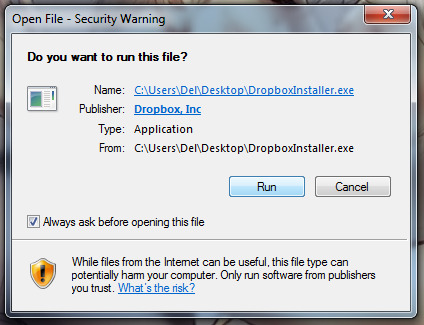
Run that file, and DropboxInstaller will install the program and will set everything ready for you, after that log in to it from your computer with your newly grabbed account details;
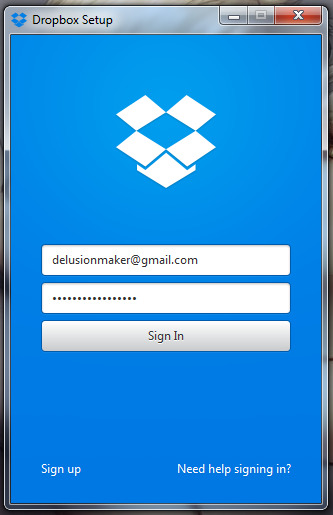
Next dropbox will deliver you short and helpful small tutorial it’s own on what you can do with this new friend of yours.

And this is what interests us the most right now. You can save your .psd, .sai, .whateverprogramyouareusing files into your Dropbox. As long as you keep your internet connection up, it will sync them with your account every time you make changes and save the file. If you lose your work because of a blue screen, or program crash, power cut, cat attack, end of the world, whatever, you will have a chance to recover it, if not the last version at least you will be able to get the earlier ones. Because dropbox will register the history of your file in your account, which I will show it step by step.
Now lets take a look into your my dropbox folder, I have several stuff in it already. The location of your folder should be similar to this: C:\Users\<Your PC Name>\Dropbox
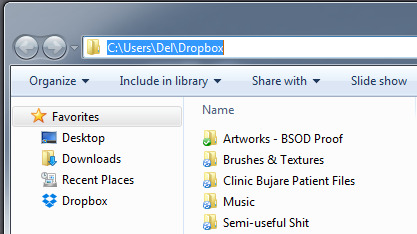
Next step open the program you use for drawing, save your file in here. Or simply copy it from your own artworks folder and paste it in here. BUT for this system to work you need to continue on working on the file that is in the dropbox.
Let me say it again, you need to work/save on the file that is in the dropbox folder.
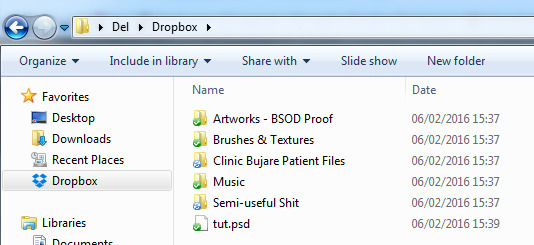
Here I saved the .psd file I was using to edit my screenshots for this tutorial. As you can notice there is blue and green icons on my other folders. Blue means the folder or the file is still trying to sync it with your account and your device (my computer in this case), and green means the sync is completed, and your file is securely saved into your account.
Now imagine, karma missed it’s hit and accidentally fucked up your day, hours of work went down with a crash or blue screen and the worse thing is? It is corrupted!
Keep Calm and Dropbox, my fellow artists. Go back to your browser, go back to www.dropbox.com and sign in to your account.
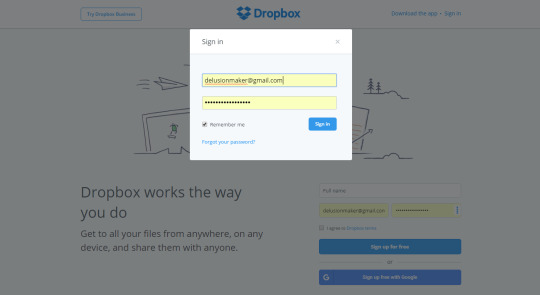
And you will see this;
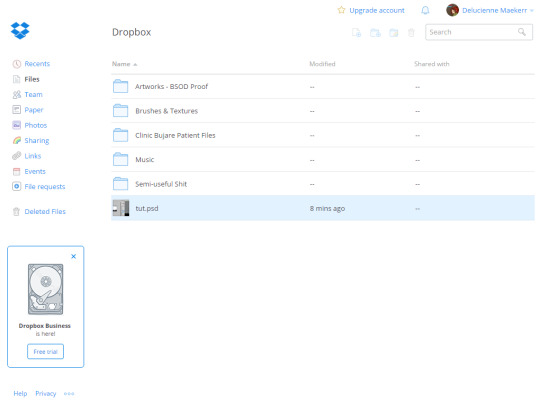
Go and right click on the file you want to recover and pick the ‘previous versions’ option;

Following that you will have this;

Every version of the file you were working on, every save command you gave is registered here. You can recover the last one, or the one before that or which ever you want by simply clicking on it and downloading to continue to work on your art. To be save, download it to your dropbox folder again and keep working on it from there.
When you done with working on your art file, you can just relocate the file to your backup drives, or whatever you would be using.
Few things to remember, the history of your account won’t remain there forever, it will get cleaned eventually. For further details on how to gain extra space or increase the length of the history you can check your account’s settings.
I hope this will help a lot of you, and was detailed enough, and easy to understand!
-del
235 notes
·
View notes
Text
🎺🐕
You have been visited by the talented dog! You don’t need to do anything he just wishes you good luck with your talents.
530 notes
·
View notes
Text
omniship-armada
I see a lot of positivity posts about 12-year-olds just learning to draw. Posts cautioning us to be mindful of 11-year-olds with no grasp of anatomy and 13-year-olds whose characters are all the same person with different hair and clothes, and I love those posts. Those are great posts. Keep those posts coming, tumblr.
But can I ask, what about the 25-year-old who just bought their first ever sketchbook? What about the 32-year-old who’s been drawing for a month and has just about got the hang of a human-looking face? What about the 67-year-old who finally has time to sit down and learn how to paint like they’ve always wanted?
Not everyone starts drawing as a child. Not everyone learned as a preteen. Some people start in college. Some people start when their career is going well and they feel like it’s time for a new hobby. Some people start after they’ve retired.
Not all beginner artists are kids, and I just thing the adults ones deserve some encouragement, too.
clatterbane
Including the ones who got discouraged from doing something earlier, and decide to try to take it back up.
173K notes
·
View notes
Text
When I was nine, possibly ten, an author came to our school to talk about writing. His name was Hugh Scott, and I doubt he’s known outside of Scotland. And even then I haven’t seen him on many shelves in recent years in Scotland either. But he wrote wonderfully creepy children’s stories, where the supernatural was scary, but it was the mundane that was truly terrifying. At least to little ten year old me. It was Scooby Doo meets Paranormal Activity with a bonny braw Scottish-ness to it that I’d never experienced before.
I remember him as a gangling man with a wiry beard that made him look older than he probably was, and he carried a leather bag filled with paper. He had a pen too that was shaped like a carrot, and he used it to scribble down notes between answering our (frankly disinterested) questions. We had no idea who he was you see, no one had made an effort to introduce us to his books. We were simply told one morning, ‘class 1b, there is an author here to talk to you about writing’, and this you see was our introduction to creative writing. We’d surpassed finger painting and macaroni collages. It was time to attempt Words That Were Untrue.
You could tell from the look on Mrs M’s face she thought it was a waste of time. I remember her sitting off to one side marking papers while this tall man sat down on our ridiculously short chairs, and tried to talk to us about what it meant to tell a story. She wasn’t big on telling stories, Mrs M. She was also one of the teachers who used to take my books away from me because they were “too complicated” for me, despite the fact that I was reading them with both interest and ease. When dad found out he hit the roof. It’s the one and only time he ever showed up to the school when it wasn’t parents night or the school play. After that she just left me alone, but she made it clear to my parents that she resented the fact that a ten year old used words like ‘ubiquitous’ in their essays. Presumably because she had to look it up.
Anyway, Mr Scott, was doing his best to talk to us while Mrs M made scoffing noises from her corner every so often, and you could just tell he was deflating faster than a bouncy castle at a knife sharpening party, so when he asked if any of us had any further questions and no one put their hand up I felt awful. I knew this was not only insulting but also humiliating, even if we were only little children. So I did the only thing I could think of, put my hand up and said “Why do you write?”
I’d always read about characters blinking owlishly, but I’d never actually seen it before. But that’s what he did, peering down at me from behind his wire rim spectacles and dragging tired fingers through his curly beard. I don’t think he expected anyone to ask why he wrote stories. What he wrote about, and where he got his ideas from maybe, and certainly why he wrote about ghosts and other creepy things, but probably not why do you write. And I think he thought perhaps he could have got away with “because it’s fun, and learning is fun, right kids?!”, but part of me will always remember the way the world shifted ever so slightly as it does when something important is about to happen, and this tall streak of a man looked down at me, narrowed his eyes in an assessing manner and said, “Because people told me not to, and words are important.”
I nodded, very seriously in the way children do, and knew this to be a truth. In my limited experience at that point, I knew certain people (with a sidelong glance to Mrs M who was in turn looking at me as though she’d just known it’d be me that type of question) didn’t like fiction. At least certain types of fiction. I knew for instance that Mrs M liked to read Pride and Prejudice on her lunch break but only because it was sensible fiction, about people that could conceivably be real. The idea that one could not relate to a character simply because they had pointy ears or a jet pack had never occurred to me, and the fact that it’s now twenty years later and people are still arguing about the validity of genre fiction is beyond me, but right there in that little moment, I knew something important had just transpired, with my teacher glaring at me, and this man who told stories to live beginning to smile. After that the audience turned into a two person conversation, with gradually more and more of my classmates joining in because suddenly it was fun. Mrs M was pissed and this bedraggled looking man who might have been Santa after some serious dieting, was starting to enjoy himself. As it turned out we had all of his books in our tiny corner library, and in the words of my friend Andrew “hey there’s a giant spider fighting a ghost on this cover! neat!” and the presentation devolved into chaos as we all began reading different books at once and asking questions about each one. “Does she live?”— “What about the talking trees” —“is the ghost evil?” —“can I go to the bathroom, Miss?” —“Wow neat, more spiders!”
After that we were supposed to sit down, quietly (glare glare) and write a short story to show what we had learned from listening to Mr Scott. I wont pretend I wrote anything remotely good, I was ten and all I could come up with was a story about a magic carrot that made you see words in the dark, but Mr Scott seemed to like it. In fact he seemed to like all of them, probably because they were done with such vibrant enthusiasm in defiance of the people who didn’t want us to.
The following year, when I’d moved into Mrs H’s class—the kind of woman that didn’t take away books from children who loved to read and let them write nonsense in the back of their journals provided they got all their work done—a letter arrived to the school, carefully wedged between several copies of a book which was unheard of at the time, by a new author known as J.K. Rowling. Mrs H remarked that it was strange that an author would send copies of books that weren’t even his to a school, but I knew why he’d done it. I knew before Mrs H even read the letter.
Because words are important. Words are magical. They’re powerful. And that power ought to be shared. There’s no petty rivalry between story tellers, although there’s plenty who try to insinuate it. There’s plenty who try to say some words are more valuable than others, that somehow their meaning is more important because of when it was written and by whom. Those are the same people who laud Shakespeare from the heavens but refuse to acknowledge that the quote “Some are born great, some achieve greatness, and some have greatness thrust upon them“ is a dick joke.
And although Mr Scott seems to have faded from public literary consumption, I still think about him. I think about his stories, I think about how he recommended another author and sent copies of her books because he knew our school was a puritan shithole that fought against the Wrong Type of Wordes and would never buy them into the library otherwise. But mostly I think about how he looked at a ten year old like an equal and told her words and important, and people will try to keep you from writing them—so write them anyway.
139K notes
·
View notes










